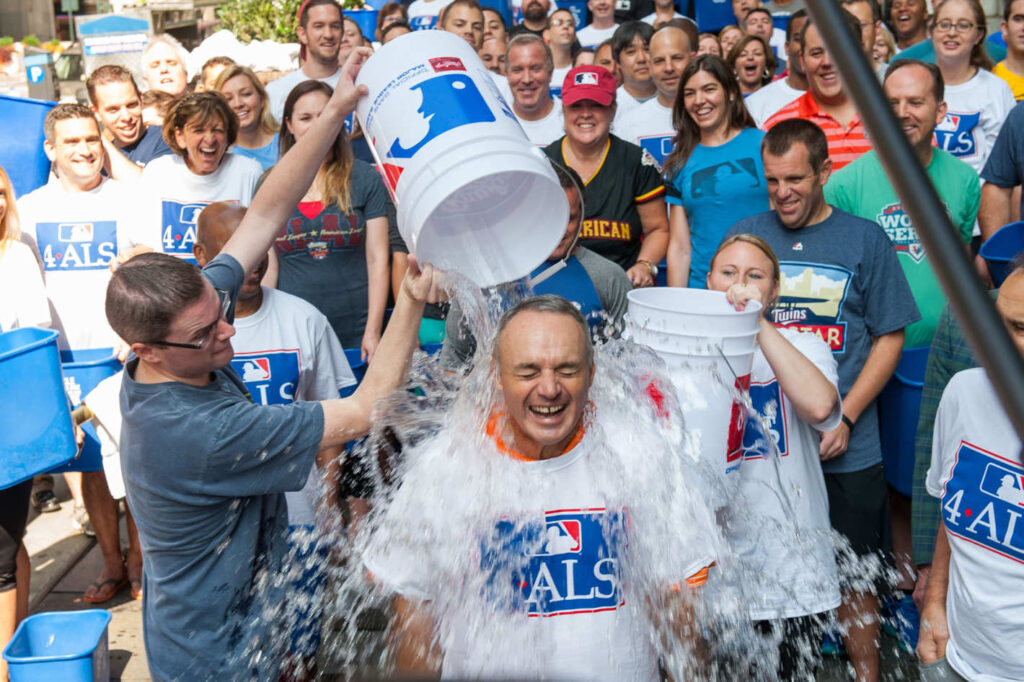To all those who took part in the ice bucket challenge, your icy ordeal may have paid off.
The Ice Bucket Challenge was quite the online phenomenon around the world in summer 2014. The challenge saw people dunking a bucket of ice cold water over their heads and sharing the video on social media. The key to the success of the challenge was participants nominating others to undertake the challenge, donate and share the evidence within 24 hours. The aim was to raise money and awareness of ALS (Amyotrophic Lateral Sclerosis), also known as Motor Neurone Disease or Lou Gehrig’s Disease.
ALS/MND is a neurological disorder in which the motor neurons that control the body’s muscle function slowly die. The disease can occur sporadically or be inherited but in both cases there is currently no cure.
There was huge online interest in the campaign with millions of people and many celebrities taking part, including Mark Zuckerberg, Tom Cruise, Taylor Swift and David Beckham.
The Breakthrough
What was seen by some as “Slacktivism” – an exercise that appears to do good but in the end achieves very little [1] – ended up being a highly effective campaign. The challenge raised over $115 million for ALS/MND in just one month.
This money has helped scientists to discover a new gene variant that is associated with the condition. The gene found, known as NEK1, will help scientists understand how the incurable disease occurs. This discovery could help lead the way for scientists to uncover new treatments and possibly a cure for the disease in the future.
Bernard Muller, a Dutch entrepreneur who was diagnosed with ALS in 2010, founded Project MinE. His project was one of the recipients of the funds raised from the Ice Bucket Challenge. He claimed, “It was one of the most successful campaigns on social media. The funding helped us with research, but it also had a profound effect on the attention not, only on the general public, but also in biotech and pharmaceutical companies – we are seeing more and more thinking that ALS should be a target [for research].”
The Chief Executive of the MND Association, Sally Light said, “Motor Neurone Disease is a devastating disease and kills more than half of people within two years of diagnosis. It’s fantastic that the money raised globally from the Ice Bucket Challenge had contributed towards the discovery of this new gene. It’s another step towards understanding so much more about what is such a complicated disease. A huge thank you to everyone who poured iced water over their heads; their support is really making a difference in our fight against MND.”
The challenge saw over 17 million videos posted on Facebook and countless celebrities got drenched in iced water for the cause. During the few weeks that the Ice Bucket Challenge went viral, a previously lesser known and underfunded disease dominated the public sphere.
Benedict Cumberbatch
Will Smith
Emma Stone
The Adorescore of the hashtag #IceBucketChallenge was a positive 63, with the main high intensity emotions being ecstasy, admiration and vigilance. These positive emotions are not surprising due to the sense of happiness that comes with the realisation that a fun fad was able to make a significant contribution to science, which will likely improve the lives of those suffering with this disease. The challenge increased awareness of the disease, which has led to the presence of vigilance (or heightened interest) throughout their interaction with the hashtag.
So what encouraged people to share online? The influencing power of the celebrity helped a great deal. These people already have huge followings of fans who admire them and are likely to support something that they promote.
The viral campaign was part of a bid to boost crowdfunding and it was certainly effective. This is a great example which demonstrates the power of social media, emphasising how it can be used for good.
[1] www.theguardian.com/science/2016/jul/27/how-the-ice-bucket-challenge-led-to-an-als-research-breakthrough




